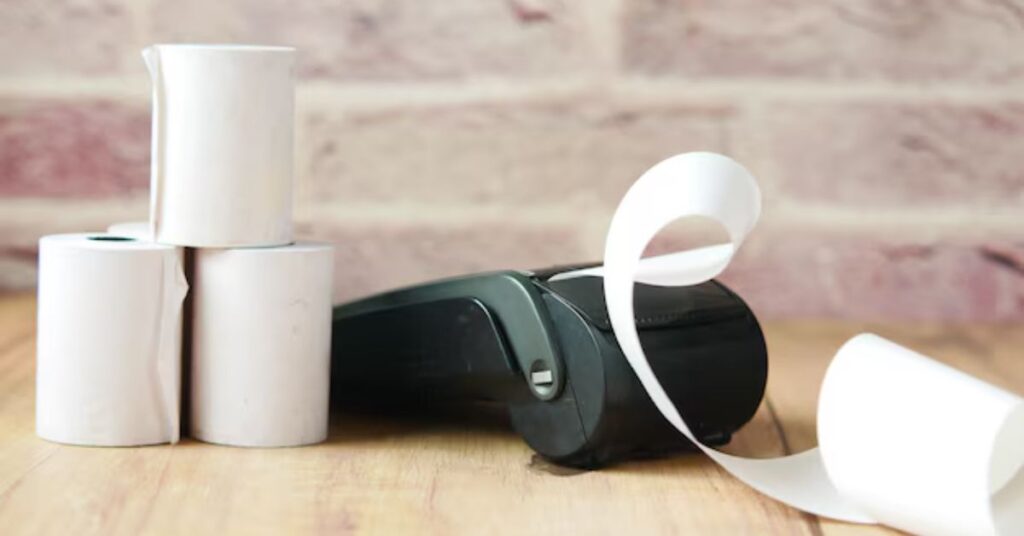Introduction
Shipping labels are a crucial part of eCommerce and logistics, ensuring that packages reach their destinations efficiently. Thermal labels are a popular choice for shipping due to their cost-effectiveness, durability, and compatibility with various shipping carriers. However, choosing the right thermal labels can be challenging, especially with numerous options available in the market.
In this guide, we’ll walk you through everything you need to know about selecting thermal labels for shipping, including label types, key factors to consider, and a trusted label manufacturer recommendation—Betckey.
What Are Thermal Shipping Labels?
Thermal shipping labels are labels that use heat-sensitive technology to print shipping details. Unlike traditional inkjet or laser labels, thermal labels do not require ink, toner, or ribbons, making them an economical and hassle-free solution for businesses that ship packages frequently.
Types of Thermal Labels
There are two main types of thermal labels used for shipping:
- Direct Thermal Labels
- Print using heat-sensitive material
- No need for ink, toner, or ribbons
- Cost-effective and widely used for shipping labels
- Susceptible to fading over time when exposed to heat, light, or friction
- Thermal Transfer Labels
- Require a ribbon for printing
- More durable and resistant to fading
- Ideal for long-term labeling needs
- Used for industrial, inventory, and barcode labeling
For most shipping applications, direct thermal labels are the preferred choice since shipping labels typically don’t need to last beyond their delivery timeline.
Factors to Consider When Choosing Thermal Labels
1. Label Size and Compatibility
Different shipping carriers require specific label sizes. The standard size for most major carriers (USPS, UPS, FedEx, DHL) is 4” x 6”. However, some businesses may need different sizes depending on their packaging and printer compatibility.
Before purchasing thermal labels, ensure they are compatible with your thermal printer model (e.g., Rollo, Zebra, DYMO, Brother, etc.).
2. Adhesive Strength
A shipping label should have strong adhesion to stick securely to different packaging materials, including:
- Cardboard boxes
- Poly mailers
- Bubble mailers
Choose permanent adhesive labels to prevent peeling or detachment during transit.
3. Print Quality and Durability
High-quality thermal labels ensure that barcodes, tracking numbers, and shipping details remain legible throughout the delivery process. Labels should be:
- Smudge-proof
- Fade-resistant (at least for the duration of transit)
- Waterproof or moisture-resistant (especially for humid conditions)
4. Roll vs. Fan-fold Labels
Thermal labels come in two main formats:
- Roll Labels: Suitable for printers with roll holders, allowing continuous printing.
- Fan-fold Labels: Stacked and folded labels that work with printers that support fan-fold feeding.
Your choice depends on your printer’s feeding mechanism and your preference for label handling.
5. Cost and Bulk Purchasing
If you run a high-volume shipping business, consider buying thermal label’s in bulk to save on costs. Some manufacturers, like Betckey, offer wholesale pricing and multi-pack options to ensure you get high-quality labels at an affordable rate.
Recommended Brand: Betckey Thermal Labels
When choosing thermal label’s, it’s essential to invest in a reputable brand that offers high-quality, compatible, and cost-effective solutions. Betckey is a trusted manufacturer known for providing premium thermal label’s for shipping. Here’s why you should consider Betckey:
✅ Wide Compatibility: Works with popular thermal label printers, including Zebra, Rollo, and DYMO. ✅ High-Quality Adhesion: Ensures label’s stay securely attached to packages during transit. ✅ Crisp and Clear Printing: Supports high-resolution printing for easy barcode scanning. ✅ Bulk Buying Options: Offers multi-pack purchases to help businesses save money. ✅ Durability: Resistant to smudging and moisture, making them ideal for various shipping conditions.
How to Print and Apply Thermal Shipping Labels
Step 1: Prepare Your Printer
- Ensure your thermal printer is set up and connected to your computer.
- Load the correct size and type of labels into the printer.
Step 2: Generate and Print Your Shipping Label
- Use your preferred eCommerce platform (e.g., Shopify, eBay, Amazon) or shipping service (e.g., USPS, UPS, FedEx) to create a shipping label.
- Select the appropriate label size and format.
- Print a test label to check alignment and quality.
Step 3: Apply the Label to Your Package
- Peel off the label backing and firmly press the label onto a clean, dry surface.
- Ensure there are no wrinkles or air bubbles to maintain barcode scannability.
- If necessary, use clear label protectors for added durability.
Frequently Asked Questions (FAQs)
1. Can I use direct thermal labels for long-term storage?
Direct thermal label’s are not ideal for long-term storage as they tend to fade over time, especially when exposed to heat or light. If you need long-lasting label’s, consider thermal transfer label’s.
2. What is the best label size for shipping packages?
The standard size for shipping labels is 4” x 6”, which is widely accepted by major carriers like USPS, UPS, and FedEx.
3. Do thermal labels work with all printers?
No, thermal label’s are specifically designed for thermal label printers. Make sure to check compatibility with your printer model before purchasing.
Conclusion
Choosing the right thermal label’s for shipping is crucial for efficient order fulfillment, package tracking, and cost savings. Factors such as label size, adhesive quality, print durability, and printer compatibility should be carefully considered.
For high-quality and cost-effective thermal label’s, Betckey is a top recommendation, offering reliable solutions for businesses of all sizes. Whether you’re shipping a few packages a week or running a high-volume eCommerce store, investing in the right thermal label’s will help streamline your shipping process and ensure smooth deliveries.







